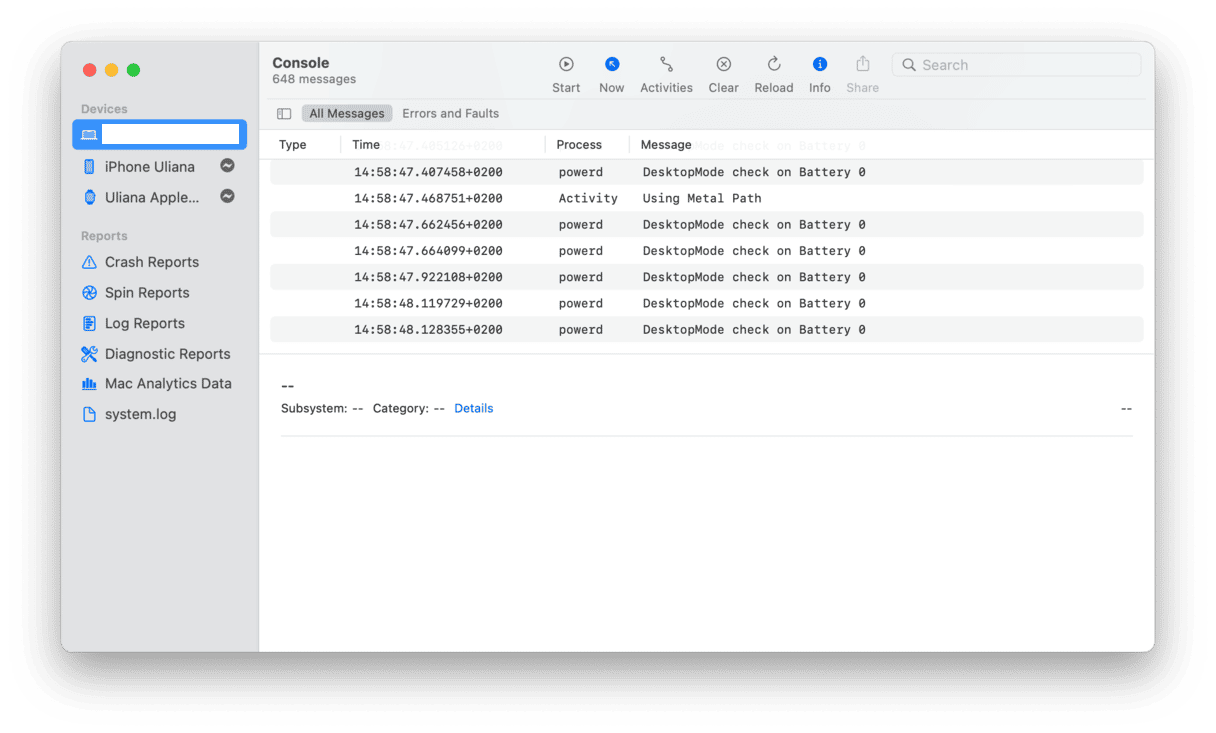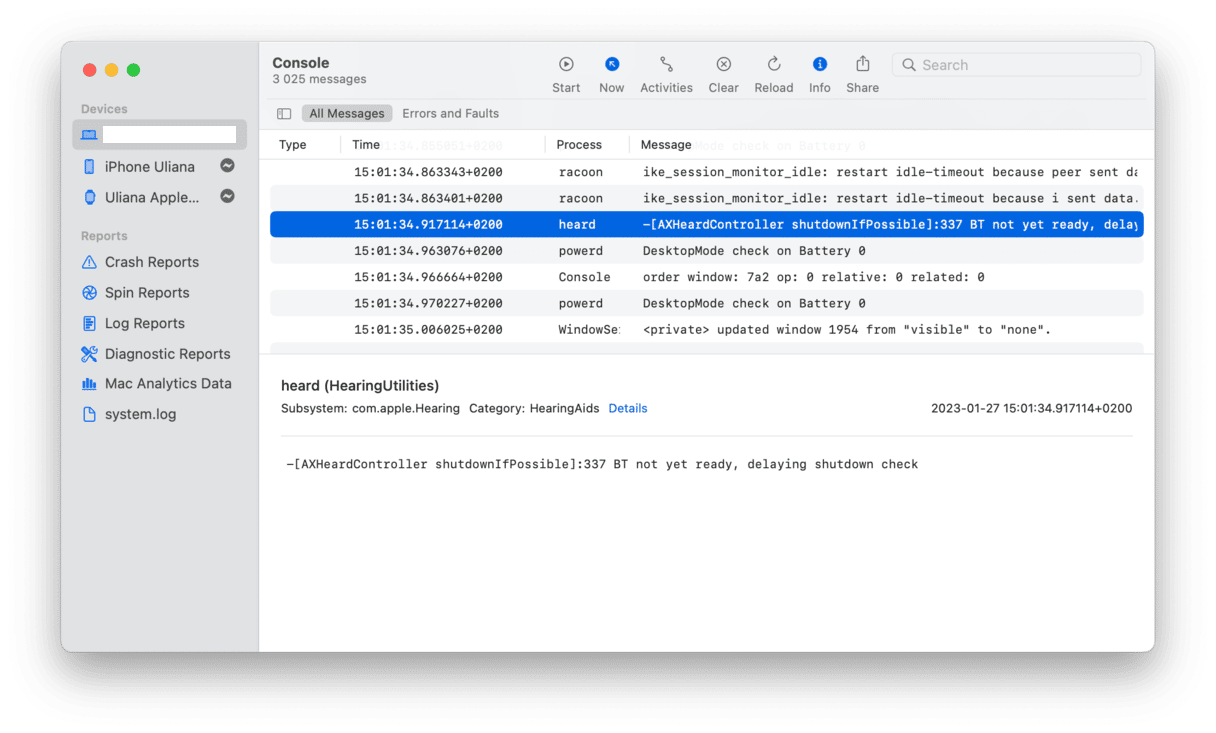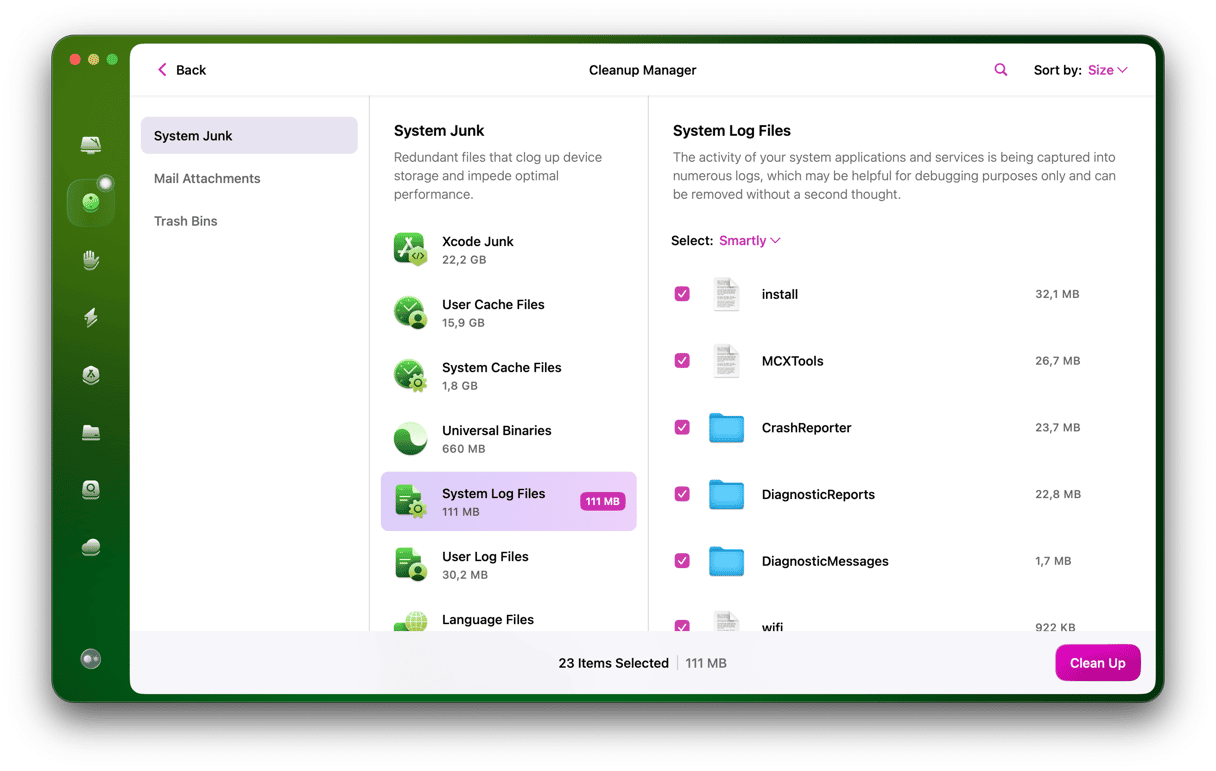Console, which is tucked away in the Utilities folder in Applications, is one of the least well-known tools in macOS. However, it plays an important role, and so it is well worth getting to know. So, today, we are going to tell you what Console app is and how you can use it.
What is Console on Mac?
macOS and all the apps and processes that run within it send notes to the system with updates on their status and what they’re doing. Those notes are known as logs, and they can be read in Console. Within Console, you can search for logs, filter them, and create custom queries to find logs that match the terms you dictate. Each record contains a timestamp, the name of the application or process, and the content of the log itself.
What is Console used for?
The most common use for consoles is to troubleshoot the system or applications. If an app crashes regularly, for example, examining the log files generated by the app in Console will reveal what the app was doing just before the crash. If the logs reveal the app was trying to complete the same task each time it crashed, you have the source of your problem.
In addition, because Console logs are generated live, monitoring Console tells you precisely what is going on on your Mac at any time, which may be useful if you suspect processes are running that shouldn’t be.

How to use Console on Mac
Logs are written in technical language and won’t mean much to most people. However, you can probably understand enough to work out if a particular task or process is causing your Mac to hang or an application to crash. And you certainly won’t do any harm by searching for and reading log files.
You need to be logged in as an administrator to use Mac Console, so if you’re not already logged into an admin account, do that first.
Here’s how to open Console on your Mac: Go to Applications > Utilities and double-click Console to launch it. You’ll see your Mac listed on the left side, along with any other Apple devices on your Wi-Fi network, and log in to your Apple ID. If you don’t see them, click on the sidebar button in the Favorites bar.

- Click on the device whose logs you want to examine.
- You’ll see the logs listed, and some will be color-coded. Here’s what those colors mean:
- Red: Fault
- Yellow: Error
- Dark gray: Debug log message
- Light gray: Info log message
How to clear out log files on Mac
As we said above, your Mac creates and stores thousands of log files during its lifetime, and most people never look at them. They can also take up quite a bit of space on your Mac’s boot drive, along with lots of other files you don’t need and will never use. Here’s how to use CleanMyMac to get rid of them all and free up several gigabytes of space.
- Download CleanMyMac — there is a free trial version.
- Once it’s downloaded, follow the instructions on the screen to install it, then open it from your Applications folder.
- Choose System Junk in the sidebar.
- Click the Scan button.
- Then click Clean. When it’s finished, CleanMyMac will tell you the total size of all the junk files it has found.

Console is a handy utility for viewing log files and tracking down the causes of problems on your Mac. However, they quickly grow in size, so you may want to get rid of them every now and again. Using a dedicated cleaner, like CleanMyMac, for removing logs, you will keep your Mac working fast and smoothly.







